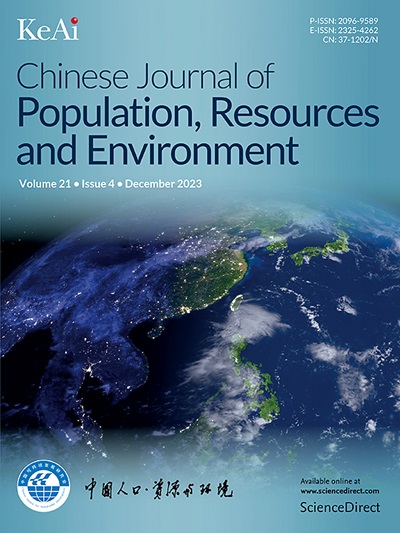中国间歇性可再生能源发电的发展路径:扩散因素的影响
IF 4.8
4区 环境科学与生态学
Q2 ENVIRONMENTAL STUDIES
Chinese Journal of Population Resources and Environment
Pub Date : 2025-06-01
DOI:10.1016/j.cjpre.2025.05.005
引用次数: 0
摘要
随着碳中和目标的提出,间歇性可再生能源在未来的电力行业将变得越来越重要。研究其发展路径是至关重要的,特别是风能和光伏发电,同时考虑到扩散势的限制。本研究运用学习曲线、动态规划和Bass模型,分析技术扩散趋势,以确定到2060年中国间歇性可再生能源发电最具成本效益的发展路线。本研究简化了现实,考察了风电和光伏各自的扩散过程,重点研究了两种技术的自扩散特性。研究假设自扩散是未来发展的主要驱动力,并描述了多种因素的影响。研究发现,在间歇性可再生能源部署的早期阶段,支持性政策是发展的关键驱动因素,尤其是光伏发电。由于成本较低,光伏目前的扩散规模对其未来发展的积极影响大于风电。从长远来看,2030年的分阶段目标预计将提前实现,未来间歇性可再生能源产量的大部分预计将来自光伏发电。光伏与风电的快速发展期结束时间相近,但光伏的最大扩散势高于风电。投资约束和技术水平影响了发展路径的初期和中期阶段,但其影响是有限的。电网容量仍然是整个研究领域的关键制约因素。本文章由计算机程序翻译,如有差异,请以英文原文为准。
China’s development path for intermittent renewable energy power generation: The influence of diffusion factors
With the proposed carbon-neutrality targets, intermittent renewable energy will become increasingly significant for the power sector in the future. It is vital to study its development paths, particularly for wind power and photovoltaics, while considering constraints on diffusion potential. Using learning curves, dynamic programming, and Bass models, this study analyzes technological diffusion trends to determine the most cost-effective development route for intermittent renewable energy power generation in China by 2060. This study simplifies reality by examining the individual diffusion processes of wind and photovoltaic power, focusing on the self-diffusion characteristics of the two technologies. The study assumes that self-diffusion is the primary driver of future development and describe the influence of multiple factors. The study finds that supportive policies are key drivers of development in the early stages of intermittent renewable energy deployment, especially for photovoltaics. The current diffusion scale of photovoltaics has a greater positive impact on its future development than that of wind power due to lower costs. In the long term, the phased goal for 2030 is projected to be met ahead of schedule, and the majority of future intermittent renewable energy output is expected to come from photovoltaics. The rapid development phases of photovoltaic and wind power conclude at similar times, but the maximum diffusion potential of photovoltaics is higher than that of wind power. Investment constraints and technological levels affect the initial and middle phases of the development path, but their effects are limited. The capacity of the power grid remains the key constraint in the entire research field.
求助全文
通过发布文献求助,成功后即可免费获取论文全文。
去求助
来源期刊

Chinese Journal of Population Resources and Environment
ENVIRONMENTAL STUDIES-
CiteScore
4.30
自引率
1.10%
发文量
791
审稿时长
79 days
期刊介绍:
The Chinese Journal of Population, Resources and Environment (CJPRE) is a peer-reviewed international academic journal that publishes original research in the fields of economic, population, resource, and environment studies as they relate to sustainable development. The journal aims to address and evaluate theoretical frameworks, capability building initiatives, strategic goals, ethical values, empirical research, methodologies, and techniques in the field. CJPRE began publication in 1992 and is sponsored by the Chinese Society for Sustainable Development (CSSD), the Research Center for Sustainable Development of Shandong Province, the Administrative Center for China's Agenda 21 (ACCA21), and Shandong Normal University. The Chinese title of the journal was inscribed by the former Chinese leader, Mr. Deng Xiaoping. Initially focused on China's advances in sustainable development, CJPRE now also highlights global developments from both developed and developing countries.
 求助内容:
求助内容: 应助结果提醒方式:
应助结果提醒方式:


